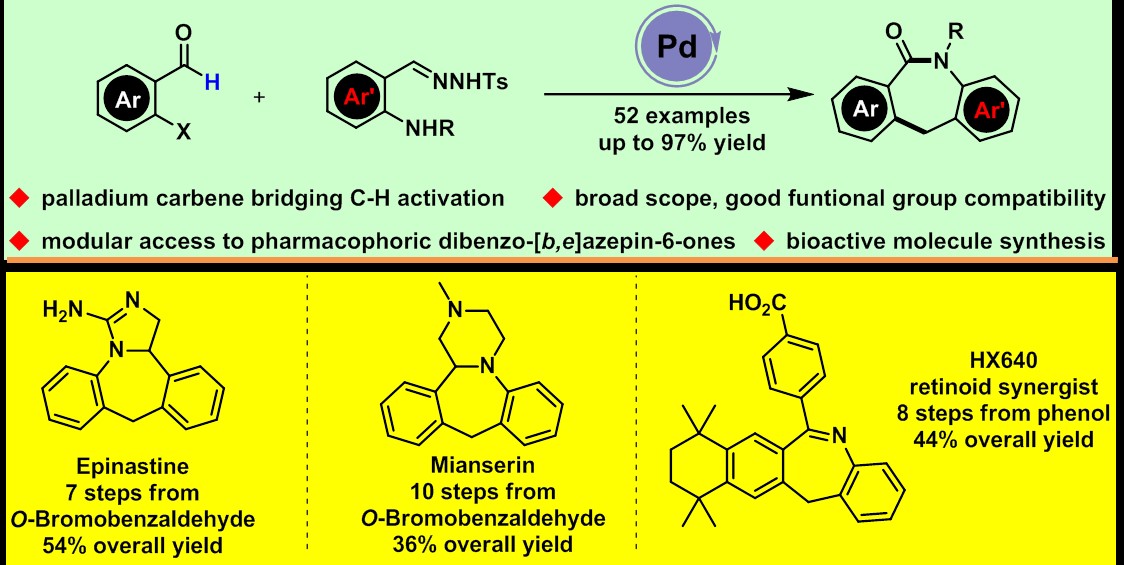Due to the intriguing biological activities and potential usefulness to serve as key intermediates for drug discovery, compounds bearing dibenzo-fused seven-membered N-heterocyclic ring system have attracted much attention. So far, there is no literature reported on modular synthesis of dibenzo-fused ε-lactams through intermolecular reactions by using easily accessible starting materials as reactants.
In a recent study published in Angew. Chem. Int. Ed., a research group led by Prof. HUANG Xueliang from Fujian Institute of Research on the Structure of Matter (FJIRSM) of the Chinese Academy of Sciences, has developed a new strategy involving modular access to dibenzo-fused ε-lactams through palladium carbene bridging C-H activation (CBA).
The researchers used easily accessible ortho-halo benzaldehydes and N-tosylhydrazones as reactants. Ortho-trifluoromethylsulfonyl benzaldehydes derived from the biologically active molecules can also react effectively to generate the corresponding products. The reaction exhibits wide substrate scope and good functional group compatibility.
To understand the mechanism of the reaction, the researchers performed several deuterium labeling experiments, and proposed that the reaction proceeds through a palladium carbene migratory insertion enabled 1,4-palladium shift process.
Besides, the researchers can easily scaled-up the reactions and similar efficiency maintained. They synthesized concisely a variety of intermediates of biologically active molecules and approved drugs from corresponding dibenzo-fused ε-lactams.
This study provides an effective way to synthesize dibenzo-fused ε-lactams and offers a modular and concise synthetic route to the intermediate of bioactive molecules and approved drugs. The mechanism experiments prove the reaction via 1,4-palladium shift.

Figure: Palladium-Catalyzed Access to Dibenzo-fused ε-Lactams and the Application. (Image by Prof. HUANG’s group)
Contact:
Prof. HUANG Xueliang
Fujian Institute of Research on the Structure of Matter
Chinese Academy of Sciences
Email: huangxl@fjirsm.ac.cn